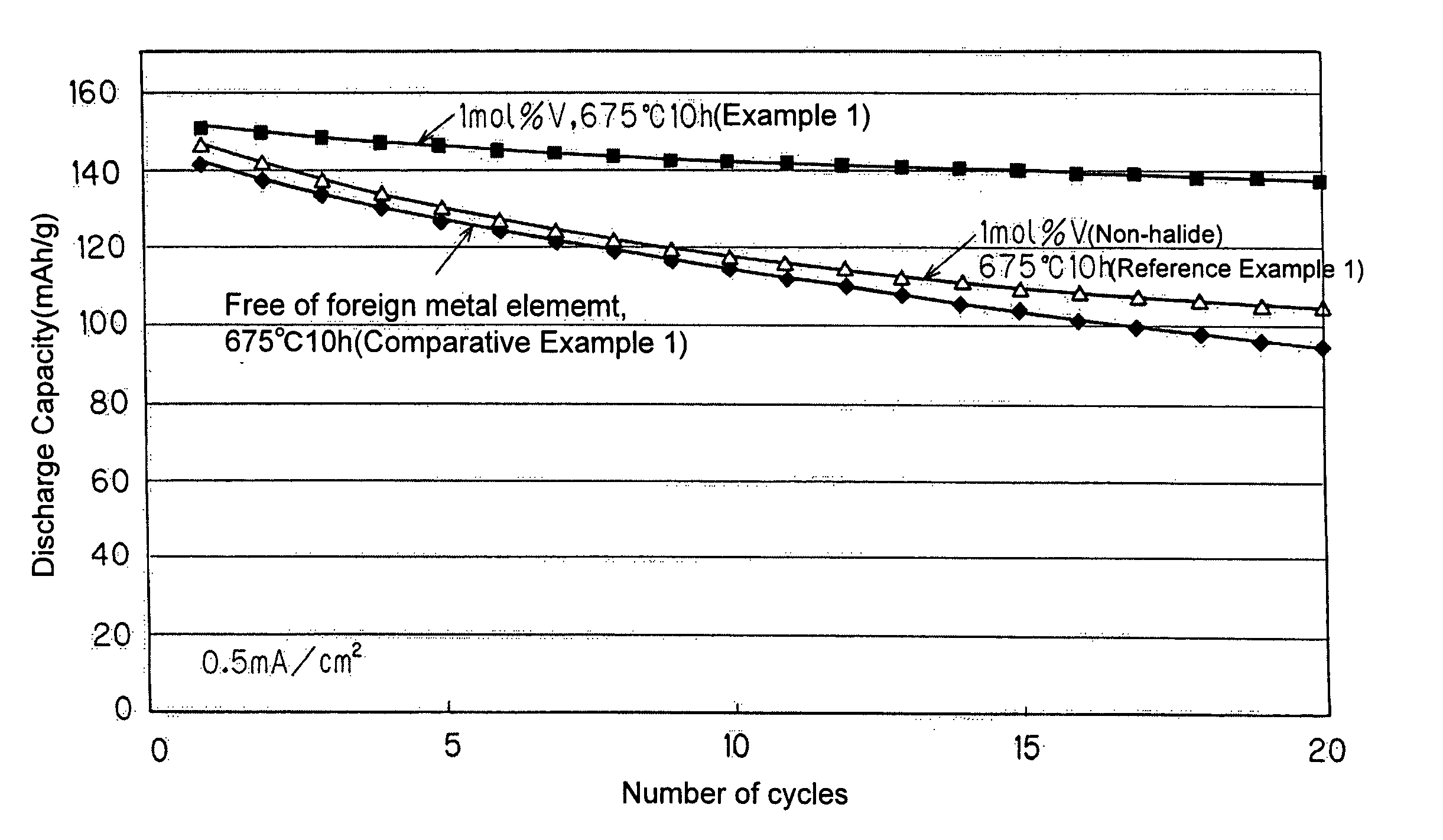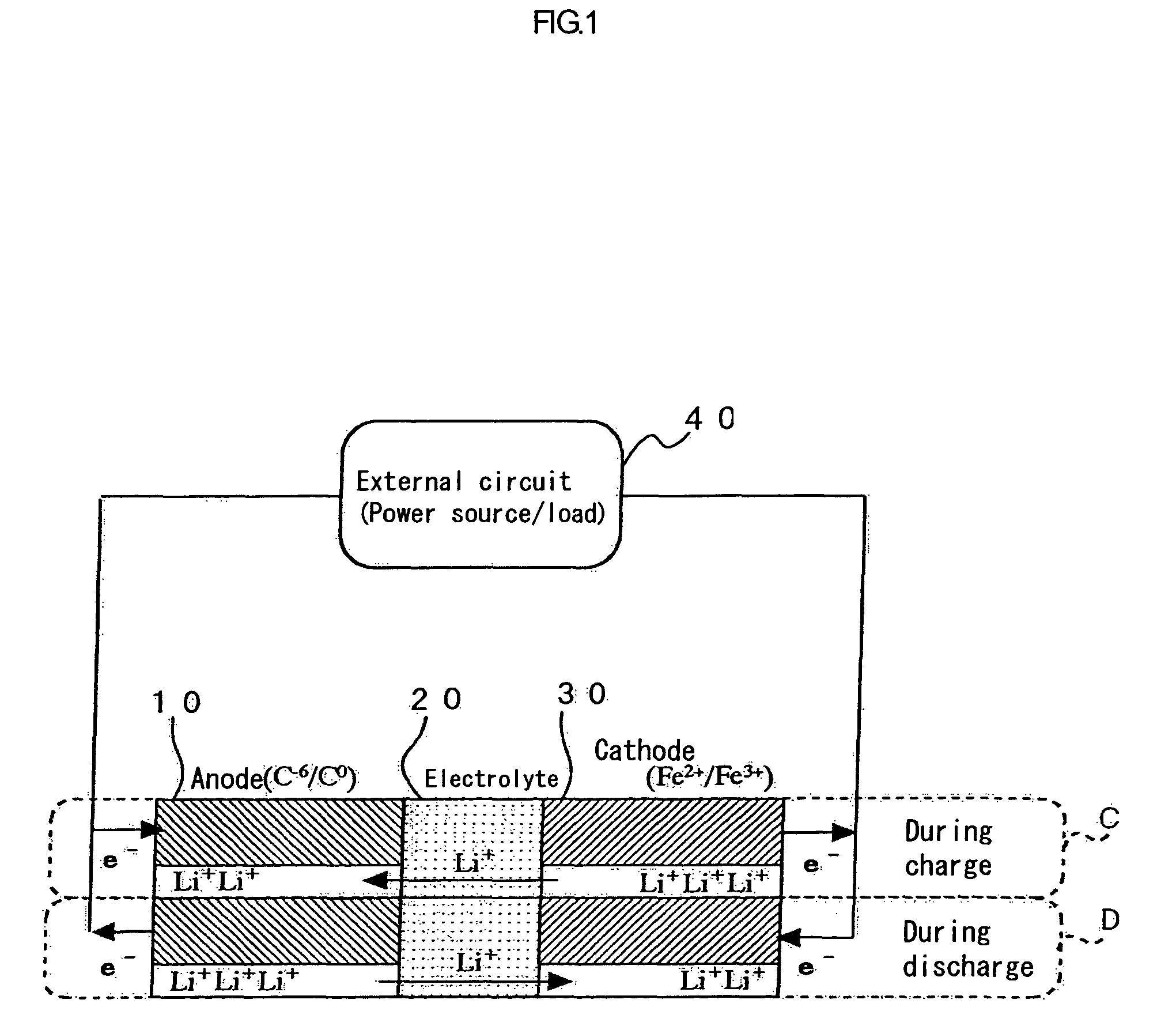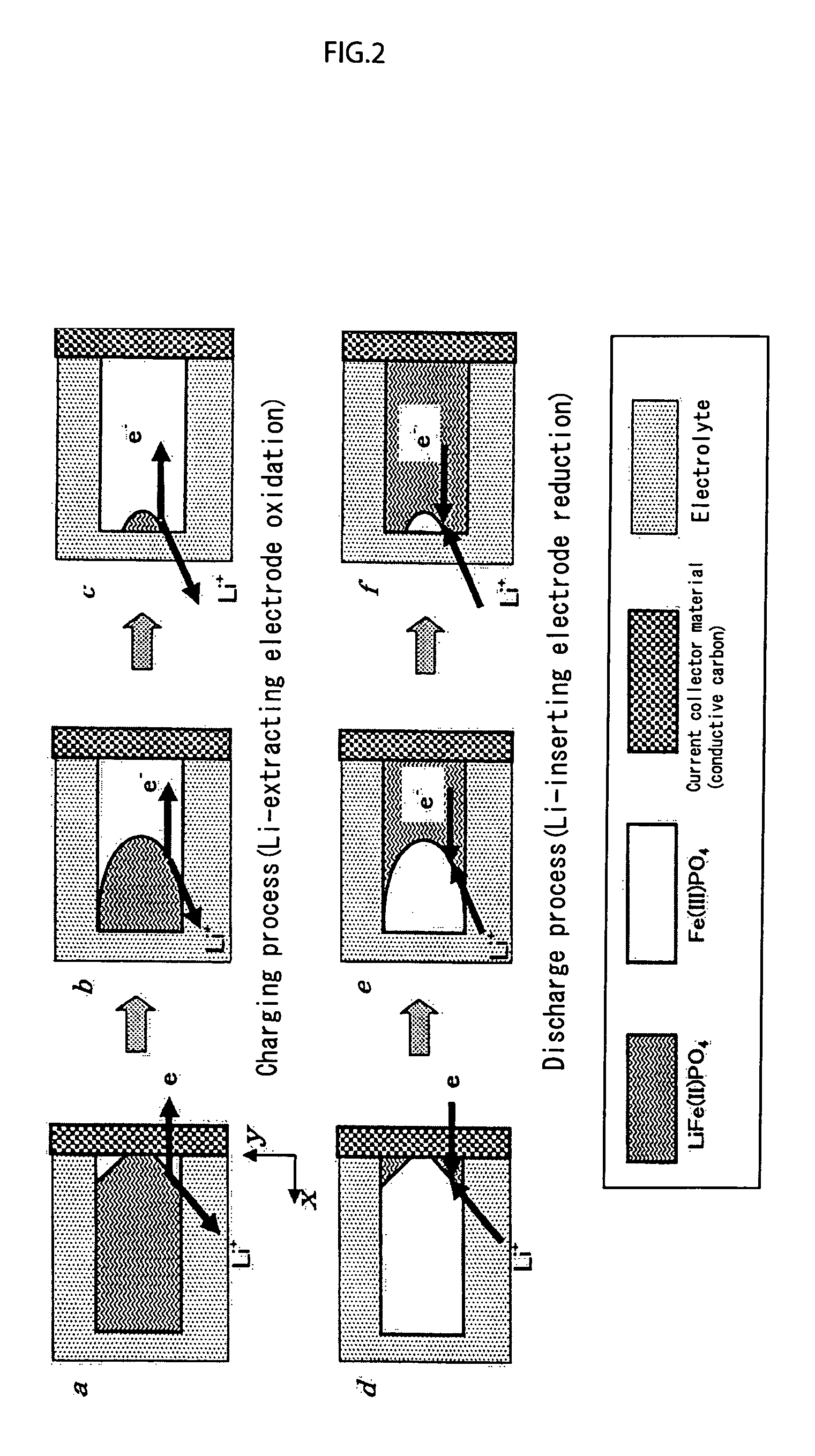Cathode material for secondary battery, method for producing cathode material for secondary battery and secondary battery
a secondary battery and cathode material technology, applied in the direction of secondary cells, secondary cell servicing/maintenance, cell components, etc., can solve the problems of small effective capacity, bad rate characteristics, and bad cycle characteristics, and achieve good charge/discharge characteristics, easy preparation, and good charge/discharge characteristics
- Summary
- Abstract
- Description
- Claims
- Application Information
AI Technical Summary
Benefits of technology
Problems solved by technology
Method used
Image
Examples
example 1
[0120]An LiFePO4 cathode material composited with vanadium (V) as a foreign metal element was synthesized by the following procedure.
[0121]A mixture of 4.4975 g of FeC2O4.2H2O (product of Wako Pure Chemical Industries, Ltd.), 3.3015 g of (NH4)2HPO4 (special grade; product of Wako Pure Chemical Industries, Ltd.), and 1.0423 g of LiOH.H2O (special grade) was mixed with a volume of ethanol about 1.5 times that of the mixture. The resulting mixture was pulverized and stirred in a planetary ball mill with 2 mm zirconia beads and a zirconia pot for 1.5 hours and dried at 50° C. under reduced pressure. The dried mixture was mixed with 0.0393 g (which corresponds to 1 mol %, in terms of element ratio, based on Fe in FeC2O4.2H2O) of vanadium trichloride VCl3 (product of Wako Pure Chemical Industries, Ltd.), and the resulting mixture was ground and stirred in an automatic agate mortar for 1.5 hours to obtain a calcination precursor. The calcination precursor was subjected to preliminary calci...
example 2
[0127]An LiFePO4 cathode material composited with chromium (Cr) as a foreign metal element was synthesized by the following procedure.
[0128]The same procedure as in Example 1 was repeated, except that 0.0396 g of CrCl3 (purity: 98%; product of Research Chemicals Ltd.) was added instead of VCl3 used in the production of the 1 mol % vanadium composite cathode material in Example 1 to the dried and ground mixture of the ingredients and the resulting mixture was ground and stirred, to obtain an LiFePO4 cathode material composited with 1 mol % of Cr.
[0129]A coin-type secondary battery was fabricated using the cathode material in the same manner as in Example 1, and the characteristics of the battery were evaluated. Elemental analysis of the cathode material by ICP emission spectrometry indicated that it had a composition of (Li:Fe:Cr:P)=(1.03:1.00:0.0093:1) (element molar ratio with respect to phosphorus (P)). X-ray diffraction analysis of the chromium composite cathode material showed o...
example 3
[0131]An LiFePO4 cathode material composited with chromium (Cr) as a foreign metal element was synthesized by the following procedure.
[0132]The same procedure as in Example 1 was repeated, except that 0.0666 g of CrCl3.6H2O (purity: 99.5%; product of Wako Pure Chemical Industries, Ltd.) was added instead of VCl3 used in the production of the 1 mol % vanadium composite cathode material in Example 1 to the dried and ground mixture of the ingredients and the resulting mixture was ground and stirred, to obtain an LiFePO4 cathode material composited with 1 mol % of Cr.
[0133]A coin-type secondary battery was fabricated using the cathode material in the same manner as in Example 1, and the characteristics of the battery were evaluated. Elemental analysis of the cathode material by ICP emission spectrometry indicated that it had a composition of (Li:Fe:Cr:P)=(0.99:1.02:0.0087:1) (element molar ratio with respect to phosphorus (P)). X-ray diffraction analysis of the chromium composite cathod...
PUM
| Property | Measurement | Unit |
|---|---|---|
| temperature | aaaaa | aaaaa |
| temperature | aaaaa | aaaaa |
| temperature | aaaaa | aaaaa |
Abstract
Description
Claims
Application Information
 Login to View More
Login to View More - R&D
- Intellectual Property
- Life Sciences
- Materials
- Tech Scout
- Unparalleled Data Quality
- Higher Quality Content
- 60% Fewer Hallucinations
Browse by: Latest US Patents, China's latest patents, Technical Efficacy Thesaurus, Application Domain, Technology Topic, Popular Technical Reports.
© 2025 PatSnap. All rights reserved.Legal|Privacy policy|Modern Slavery Act Transparency Statement|Sitemap|About US| Contact US: help@patsnap.com



